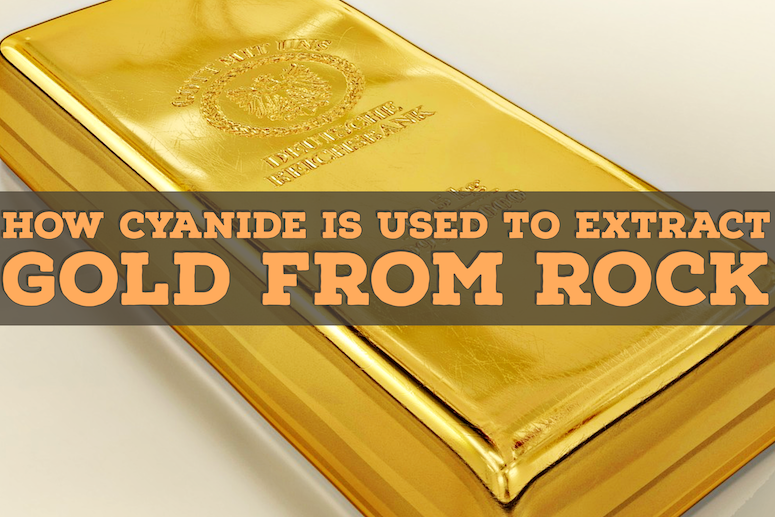
Extracting gold using cyanide solution is a practice that began in the late 1800s. Over the years, the process was refined and simplified, and by the end of the century the process was becoming accepted at mines around the world.
It is now the most widely used process to extract gold from concentrates and ores. The use of cyanide to leach gold requires education and skill. The environmental risks are very real. But until now, no other process has proven economical and viable in separating the valuable yellow metal from the ore.
Successfully carrying out the process is neither straightforward nor easy.
An Overview of Gold Extraction Using the Cyanide Leaching Process
Without going too deep into technicality, here is how the process works.
Although the overview of the process may sound easy, each step has several crucial factors and variables. They determine the outcome of the chemical process. Here are some of the most important factors involved in the cyanide leaching:
Units of Gold Present in Ore
The cyanide leaching process requires investment. So, before the process is employed it’s worth considering whether there is enough gold in the ore to cover the processing cost.
The gold recovered must pay for processing and other associated costs such as mining, transportation, etc.
It has been observed that 0.5g of gold per ton of ore with enough raw material is sufficient to make the process viable.
Even with lesser grade ores, the leaching process can be used with an additional step. Before leaching, the ore is run through the flotation process to increase the grade of gold and reduce the amount of ore that’s put through the leaching process.
Nature of Gold
Whether leaching is the ideal extraction method depends on the size and nature of gold in the ore. The rate at which gold dissolves in cyanide is 0.2 to 0.5 ϕm per hour.
Under normal conditions, gold nuggets and larger particles would take longer to dissolve. Hence, the cyanide method is best suited when there is fine gold to be extracted.
This is one reason why many modern mines rework old tailings that have already been mined. The larger flakes and nuggets of gold are of no consequence, but the tiny gold particles that the old timers were unable to recover can now be extracted with this method.
Crush & Melt! How to Remove Gold from Rich Ores
How Glacial Activity Has Resulted in the Movement of Raw Gold
Mineralogical Composition of Ore
For this process to be viable, the gold particles must mix with the cyanide. This will happen only when the ore is porous enough to allow the cyanide to seep through. So before the leaching process is started the ore is broken to the required size to expose the gold to cyanide.
At the core of the cyanide leaching process is a basic chemical reaction between two or more components. Hence, what’s in the ore could influence the chemical reaction.

Here are some common factors that could affect the cyanide leaching process:
Sulfides: Pyrrhotite or other sulfide minerals in the ore use oxygen to oxidize and produce acid. After this reaction, very little oxygen is left for the cyanide leaching reaction. Hence, oxygen needs to be supplied regularly. The acid produced during oxidation needs to be removed using lime.
Refractory Ores: Sometimes crushing the ore isn’t enough to liberate gold for leaching. Gold particles engulfed by sulfide minerals need chemicals to completely break the ore and release gold. This is achieved using the Albion Process, Bacterial Leaching, or Pressure Oxidation method.
Preg-robbing: Activated carbon isn’t the only substance that can absorb gold. Microscopic carbon and other minerals in the ore are capable of locking with gold. To avoid such a scenario, higher activated carbon is used. Microscopic carbon and other materials can be neutralized by adding diesel, kerosene, and similar substances.
Cyanicides: The gold extraction process could become uneconomical if excess of cyanide is required. This could happen if the cyanide reacts with other substances in the ore, called cyanicides.
Temperature and pH: Both temperature and pH could influence the cyanide leaching chemical reaction. Hence, it’s essential to maintain optimum pH and temperature for the leaching activity to take place. Lime is generally used to control the pH of the reaction.
Safety Measures
Cyanide is highly poisonous. Hence, most countries have strict rules and guidelines dictating how to handle and use the substance. Often, lime (calcium hydroxide) is used to prevent the formation of hydroxide cyanide gas.
Cyanide waste and residue can be recycled and reused. Waste material that cannot be recycled can be converted to a harmless substance before disposing of them safely.
Setting up a modern mining operations that uses the cyanide leaching process is no small task. It takes years of planning and permitting, with extensive safety precautions put in place before any mining begins.
Toxic Mercury & Gold Mining – How it Works (and Better Alternatives!)
Simple & Basic Equipment to Get You Started Finding Gold
